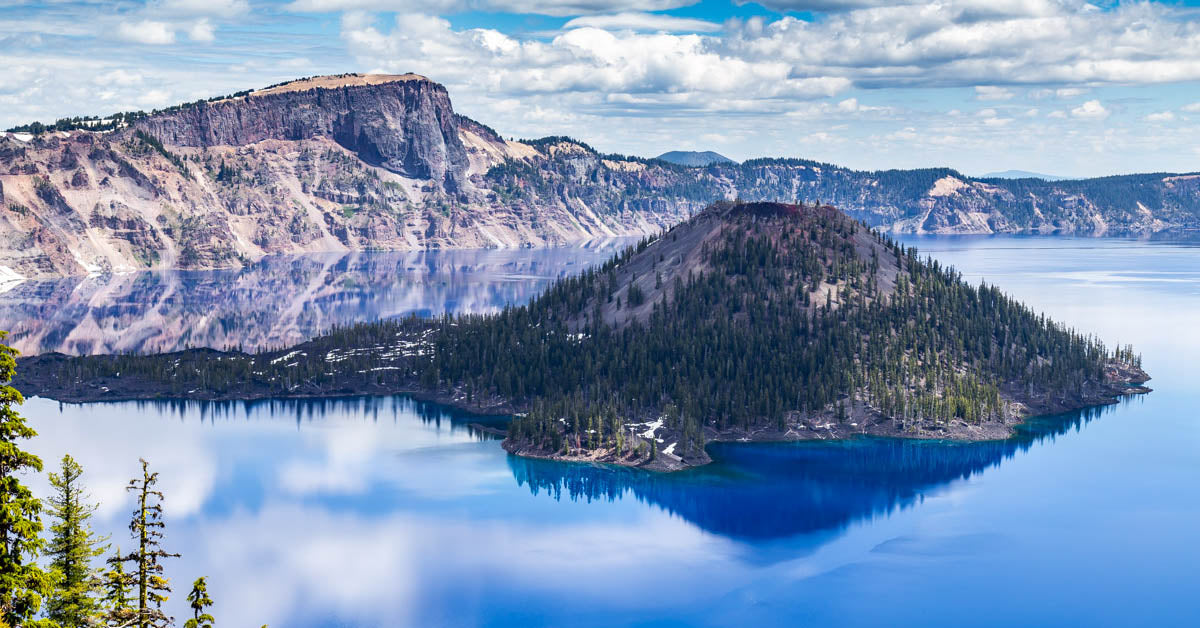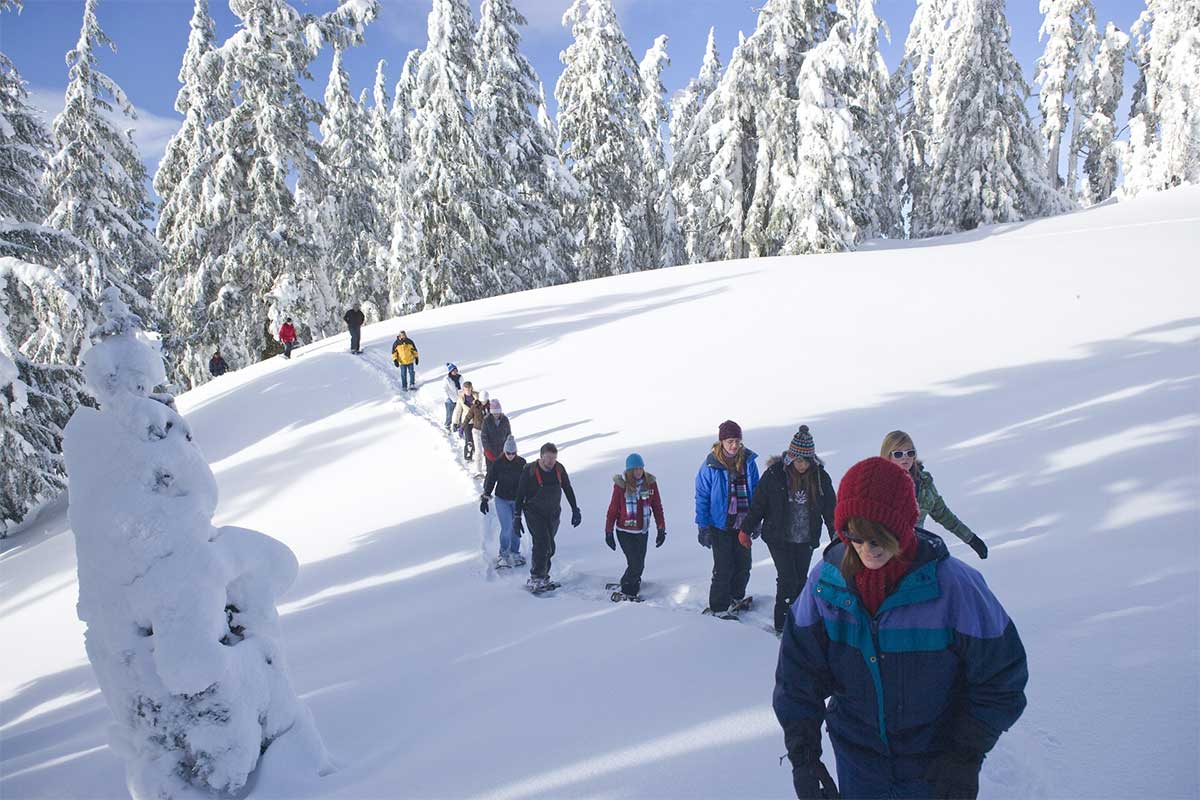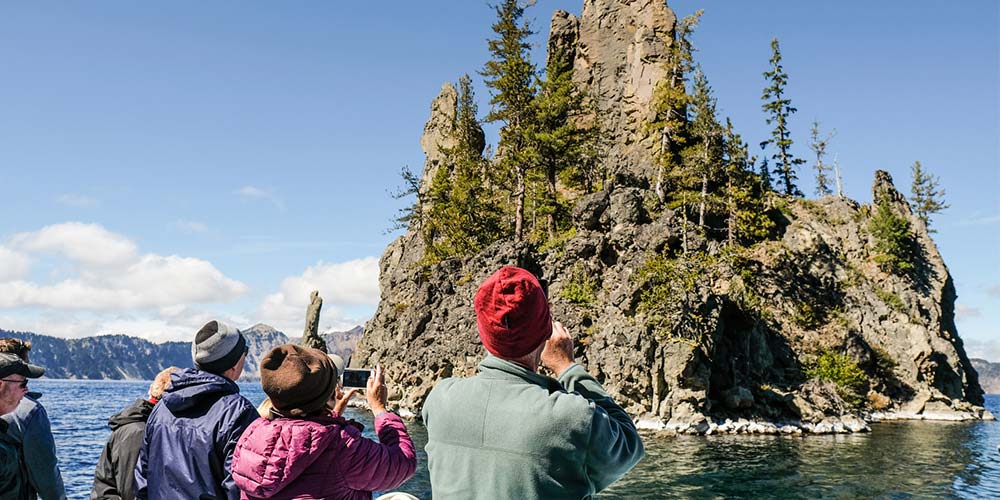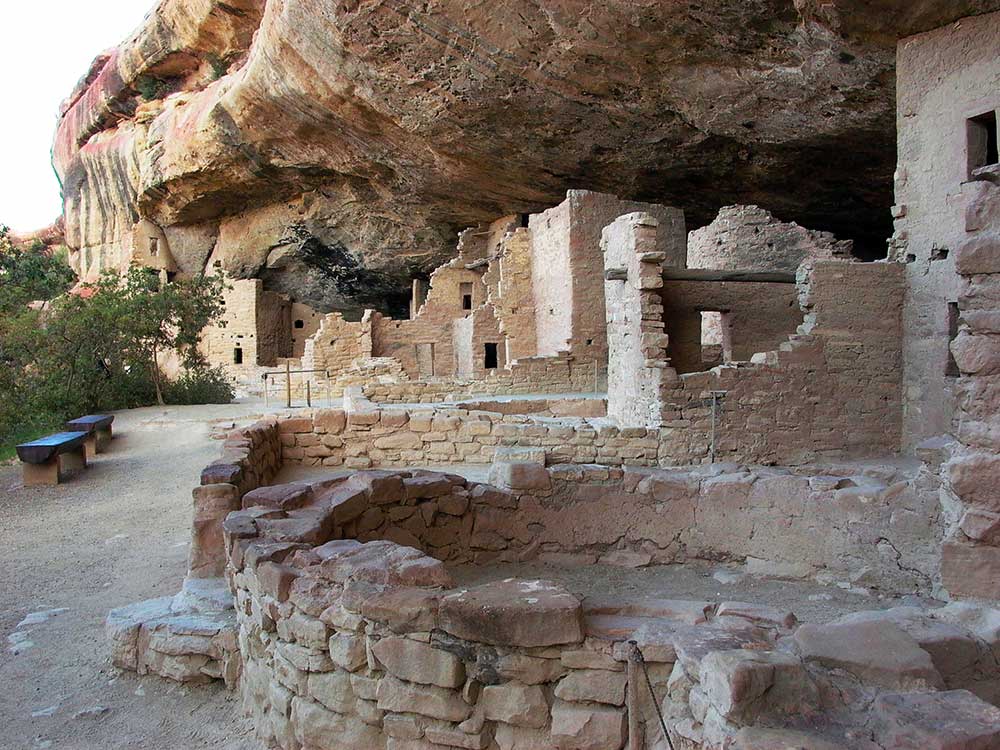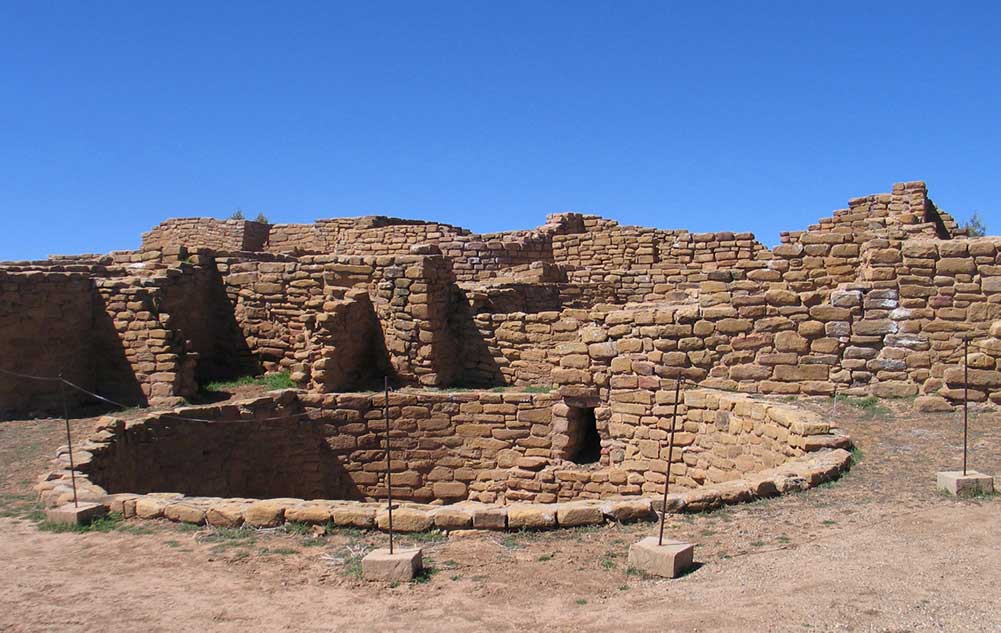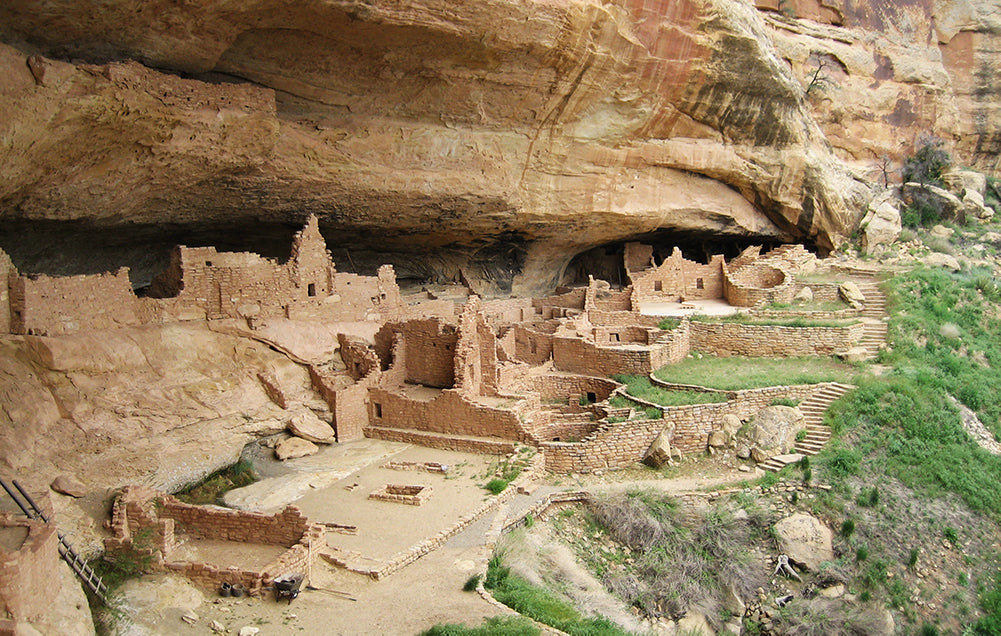Here's Your Itinerary to Visit the National Parks of the Grand Circle
If you live near Salt Lake City, Denver, Phoenix, Albuquerque or Las Vegas, you can hop on the Grand Circle in about 3 to 4 hours and start your National Parks of the Grand Circle Tour! Of course, you can also fly in to any of those cities to start your adventure.
No matter where you start, you can easily visit nine national parks with relative ease. And there's really no better way to see this country than from the open road! At most of these parks, you can either camp or take advantage of lodging inside or nearby.
The Grand Circle features some of the most spectacular national parks in the American West: Zion, Bryce Canyon, Capitol Reef, Canyonlands, Arches, Black Canyon of the Gunnison, Mesa Verde, Petrified Forest and Grand Canyon. Great Basin National Park is also part of the Grand Circle, but is a bit out of the way -- I'll talk about an option to visit there near the end of this post.
Let's start our Grand Circle Tour from Las Vegas, which provides easy access to Zion National Park! It's less than 3 hours from Las Vegas to Springdale, Utah, where you will find plenty of options for lodging and camping.
Zion National Park
At Zion National Park you can gaze up at massive sandstone towers and cliffs of cream, pink, and red that soar into a brilliant blue sky. Or, explore the Virgin River in a narrow slot canyon, which I highly recommend if the conditions are favorable. Hiking The Narrows is truly a once-in-a-lifetime experience! Established in 1919, today you can follow the paths where ancient native people and pioneers walked and experience the special places they left behind. Learn about the park's plant and animal life, geology, ecosystems, and other natural features.

Check out the Best Things to do at Zion National Park here…
As a photographer, I try to stay at least two nights in each park to make sure I have time to explore and to hopefully have good weather on at least one of the days. But if your time is short, you can try to get to Zion early, spend the day there and part of the next before heading on to Bryce Canyon National Park.
Bryce Canyon National Park
It's just a quick hour and twenty minute drive to Bryce Canyon National Park from Zion where you'll be able to see the world's largest collection of Hoodoos! Plenty of camping and lodging options here as well.
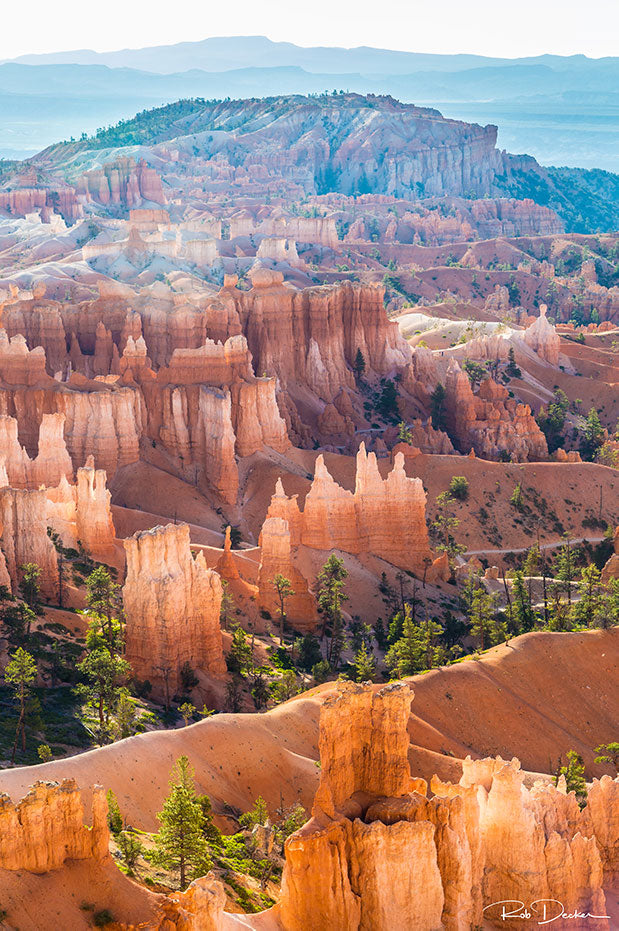
Established in 1928, at Bryce Canyon National Park you can explore the world's largest collection of hoodoos, fins, walls and windows. These hoodoos, odd-shaped pillars of rock left standing from the forces of erosion, and "frost-wedging", which over time shatters and pries rock apart. In addition, rain water, which is naturally acidic, slowly dissolves the limestone, rounding off edges and washing away debris.
Click here to learn more about Bryce Canyon National Park
Bryce Canyon is one of my all-time favorite national parks, and I highly recommend getting to the rim of the canyon for sunset. And sunrise is actually even more magical! You can hike down into the canyon or stay high along the rim. Either way, there are spectacular views everywhere you go.
In addition to hiking and biking, Canyon Trail Rides wranglers lead 2-hour and 3-hour horse and mule rides into the Bryce Amphitheater along a dedicated horse trail and the Peek-a-boo Loop Trail. It's a great way to see the park!
Capitol Reef National Park
Capitol Reef is about a two hour drive from Bryce Canyon. Depending on your timing, this is a park where you can make a shorter stop in the Fruita Historic District and take a short hike and continue on to Moab where you'll visit Arches and Canyonlands. Or you can camp inside the park in the Fruita Historic District, too. If you're looking for lodging, the closest place is in the town of Torrey or at the Capitol Reef Resort, just outside the park.

Established in 1971, Capitol Reef National Park is a hidden treasure of cliffs, canyons, domes and bridges. It lies in the Waterpocket Fold, a geologic monocline – or wrinkle – extending almost 100 miles. Archaic hunters and gatherers first settled here. Explorers, Mormon pioneers and others arrived in the 1800s, settled in what is now the Fruita Rural Historic District and planted orchards of apples, pears, and peaches.
Click here to learn more about Capitol Reef National Park
Next up is Moab, home to Arches and Canyonlands National Parks. It's about a 2 hour drive from Capitol Reef -- and each park deserves a full day of exploration. Neither park has lodging so you'll want to stay in Moab. Both parks do have campgrounds.
Arches National Park
Established in 1971, visitors to Arches National Park discover a landscape of contrasting colors, landforms and textures unlike any other in the world. Perched high above the Colorado River, the park has over 2,000 natural stone arches – including the world-famous Delicate Arch – in addition to hundreds of soaring pinnacles, massive fins and giant balanced rocks, each carved and shaped by eons of weathering and erosion.

Check out the Best Things to do at Arches National Park here…
Canyonlands
Established in 1964, today at Canyonlands National Park you can explore a wilderness of countless canyons and fantastically formed buttes carved by the Green and Colorado rivers and their tributaries. Divided into four districts, the Island in the Sky, the Needles, the Maze, and the rivers themselves, these areas share a primitive desert atmosphere, but each offers unique opportunities for sightseeing and adventure.
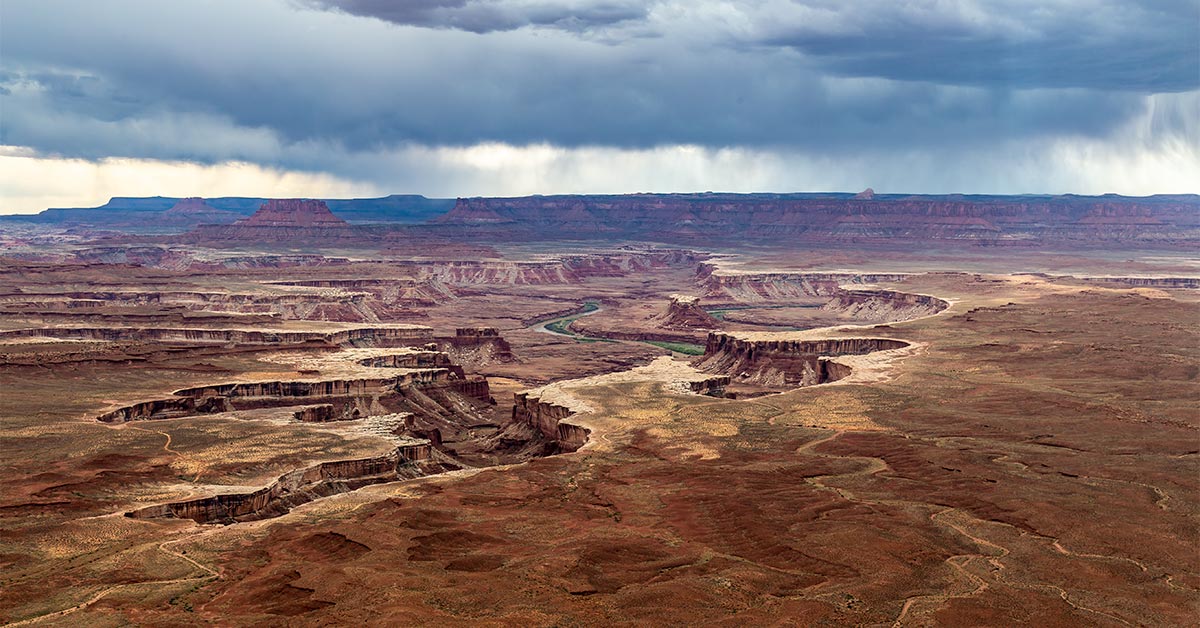
Check out the Best Things to do at Canyonlands National Park here…
Now that we've completed our tour of Utah's “Mighty Five” -- it's on to Colorado and a 3 hour drive to Black Canyon of the Gunnison National Park.
Black Canyon of the Gunnison National Park
Black Canyon of the Gunnison National Park exposes you to some of the steepest cliffs, oldest rock, and craggiest spires in North America. With two million years to work, the Gunnison River, along with the weathering forces of nature, has sculpted this vertical wilderness of rock, water, and sky. Established in 1999, this deep, steep and narrow canyon is big enough to be overwhelming, yet intimate enough to feel the pulse of time.

From here, we'll head south to Mesa Verde National Park. This is a scenic 3 hour and 45 minute drive, and Telluride is a great place to stop for lunch or take a break. Alternatively, you could go through Ouray, Silverton and Durango, which will add 20 minutes or so to the drive.
Check out the Best Things to do at Black Canyon of the Gunnison National Park...
Mesa Verde National Park
Mesa Verde National Park offers a spectacular look into the lives of the Ancestral Pueblo people who made it their home for over 700 years, from AD 600 to 1300. Established in 1906, today the park protects nearly 5,000 known archaeological sites, including 600 cliff dwellings, mesa top pueblos, farming terraces, towers, reservoirs, and check dams. These sites are some of the most notable and best preserved in the United States.
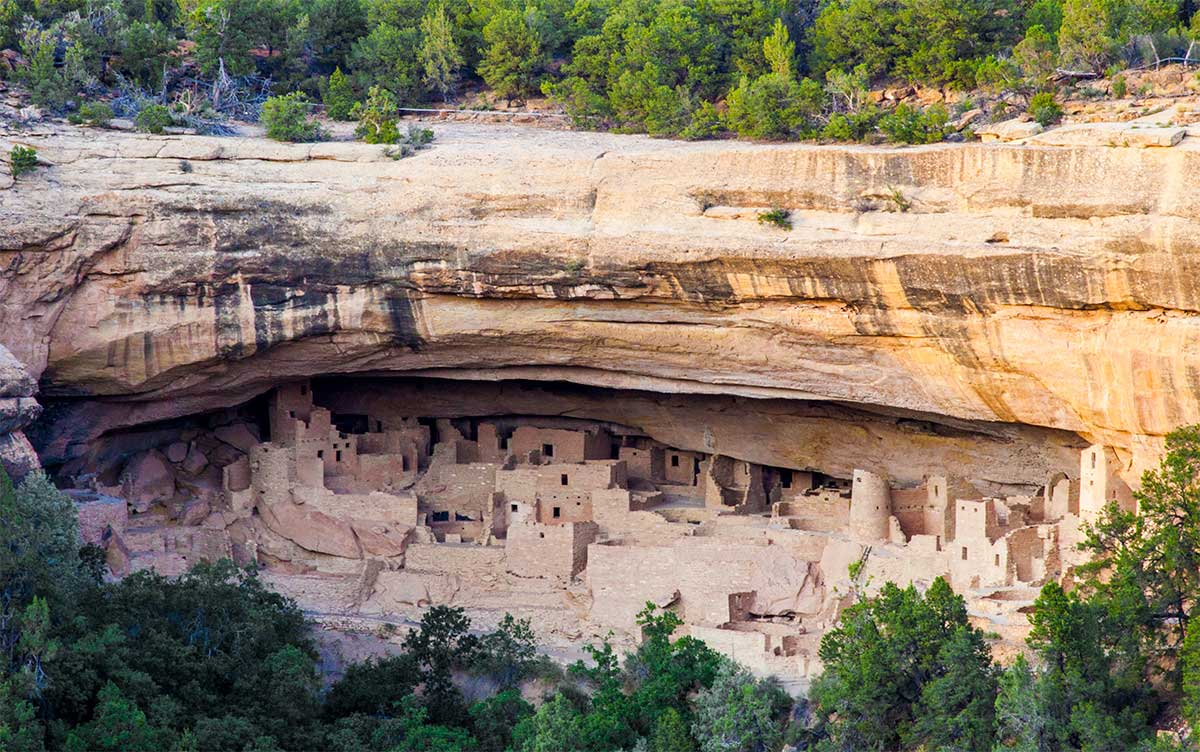
There's lodging and camping in the park -- and when I was there last, we had an excellent meal and the Metate Room Restaurant -- and there's an amazing view from every table!
Check out the Best Things to do at Mesa Verde National Park here…
Petrified Forest is our next stop on the Grand Circle, and you're looking at a four hour drive, most of it through New Mexico, then on into Arizona.
Petrified Forest National Park
Established in 1962, Petrified Forest National Park is best known for its fossils, especially fallen trees from the Late Triassic period of the Mesozoic era, about 225 million years ago. This was a time when the climate was humid and subtropical. The sediments containing the fossil logs are part of the widespread and colorful Chinle Formation. More than 600 archaeological sites, including petroglyphs, have also been discovered in the park.

There's no lodging at Petrified Forest National Park, and only backcountry camping (no facilities). The nearest lodging is in the town of Holbrook, about 26 miles away.
Depending on your timing, you can see Petrified Forest National Park in one day. One main road bisects the park, and you can stop along the way and see many of the park's main points of interest.
Click Here to Learn More About Petrified Forest National Park.
Now it's on to our final destination: The Grand Canyon!
Grand Canyon National Park
The Grand Canyon overwhelms our senses through its immense size: 277 river miles long, up to 18 miles wide, and a mile deep. Grand Canyon National Park, established in 1919, exposes unique combinations of geologic color and erosional forms. You can explore the canyon by mule, bicycle, by hiking or backpacking or on whitewater and smooth water raft trips along the Colorado River. The South Rim is the most easily accessed and provides numerous places to view the canyon from above. For the more adventurous, you can hike - or take a mule ride - down into the canyon!
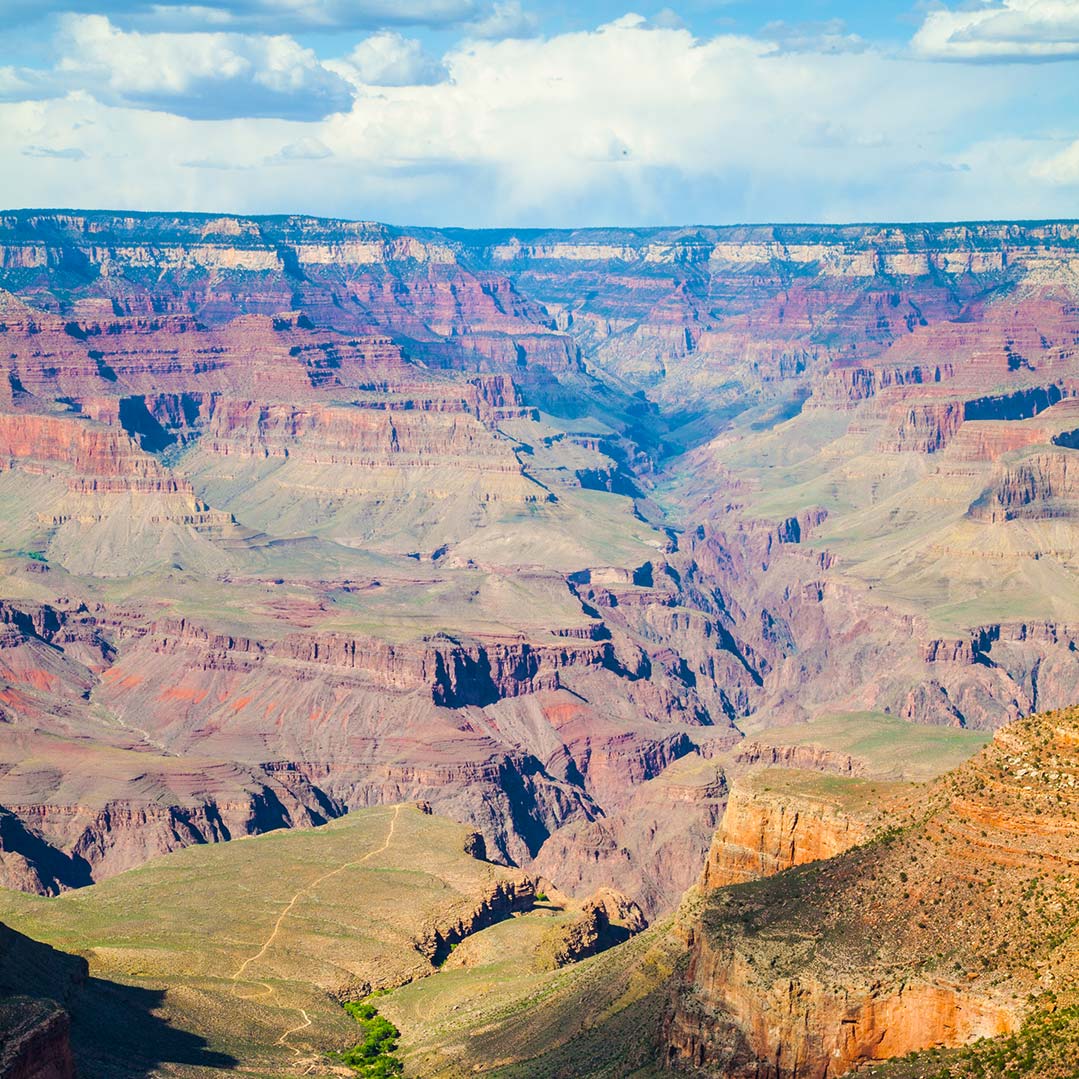
Check out the Best Things to do at Grand Canyon National Park here…
The Great Basin National Park Option
Great Basin National Park is a bit out of the way, but if you're inclined to go, I suggest you add that stop in before or after Zion National Park. Visiting Great Basin will add at least an extra five hours to your overall drive time. There's camping in the park, but no lodging -- and there aren't too many places to stay in the area.

From the 13,063-foot summit of Wheeler Peak, to the sage-covered foothills, Great Basin National Park is a place to sample the stunning diversity of the larger Great Basin region. Here you can enjoy the solitude of the wilderness, walk among ancient bristlecone pines, bask in the darkest of night skies, and explore Lehman Caves.
Click here to learn more about Great Basin National Park
About the Artist
Photographer and graphic artist Rob Decker studied photography with Ansel Adams in Yosemite National Park during the summer of 1979. The experience solidified his love of photography and our National Parks. Now he is on a journey to photograph and create iconic WPA-style posters of all our national parks as we celebrate the next 100 years of the National Park Service.
"I feel that it's important to protect America's special places, and to connect people with nature. And it's up to all of us to pitch in. Perhaps more importantly, we need to inspire the next generation of park stewards. I'm trying to make a difference by giving back to the amazing organizations that support our National Parks. I donate 10% of annual profits, so when you buy one of these original works, you're helping these trusts, conservancies and associations, too."
Click here to check out the entire National Park Poster Collection!
Source:
https://national-park-posters.com/blogs/national-park-posters/national-parks-of-the-grand-circle

